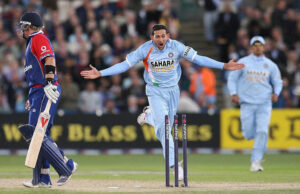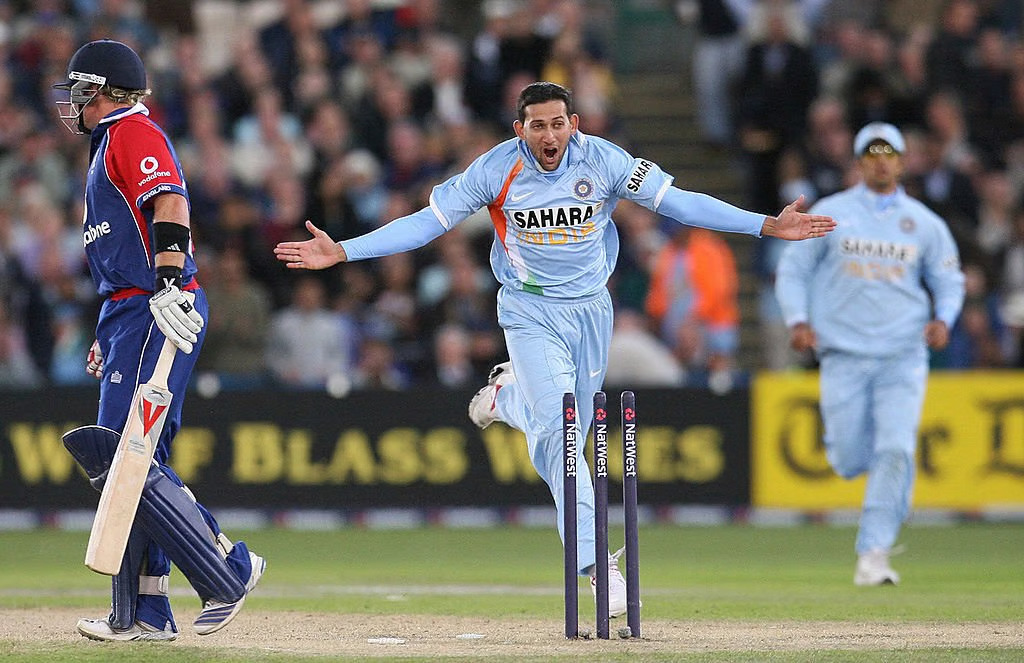
For the new generation of Indian cricket-watchers, Ajit Agarkar is the rather youthful-looking chairman of selectors. Few among them would be aware of the excitement there was around his bowling when he first emerged as an India prospect a little over a quarter-century ago. Viewed in isolation, his ODI numbers – 288 wickets at an average of 27.85 and strike-rate of 32.9 – are those of an all-time great, though few ever considered him one. That strike-rate (number of balls needed to take a wicket), in particular, is appreciably better than those of Anil Kumble and Javagal Srinath, the only two Indians to have taken more ODI wickets.
There was a certain poignancy in Agarkar being entrusted with the last word in picking a World Cup side. For all the success he enjoyed at the turn of the millennium – he was fastest to 50 ODI wickets at the time – he could never leave a mark on the global stage. His 1999 World Cup consisted of three matches against African opposition, and though he played all three in the Caribbean fiasco in 2007, that was where India’s tournament ended. In 2003, when India reached the final, he watched every game from the bench, as Ashish Nehra joined Srinath and Zaheer Khan as the third prong of the attack.
And as much as we continue to celebrate MS Dhoni, Gautam Gambhir, Yuvraj Singh and even the unlikely figure of Joginder Sharma, how many Indian fans even know that Agarkar was part of that 2007 World T20 squad? It would turn out to be his last international outing. Figures of 1-35 against Pakistan in the group stage and 0-40 against New Zealand in the second phase meant the axe fell for the final time. He would never wear that No. 68 shirt again.
It was probably by accident rather than design that such a squad was sent to South Africa, with the boffins of the Board of Control for Cricket in India (BCCI) refusing to believe that this ‘hit-and-giggle’ cricket had much of a future. Would India have won with Sachin Tendulkar, Rahul Dravid, Sourav Ganguly, Anil Kumble and Zaheer in the ranks? We can only speculate. But there’s no doubt that the new(ish) faces played a huge role in the fearless and effervescent cricket that marked that campaign.
A 20-year-old Rohit Sharma was one of the beneficiaries when India recalibrated after the loss to New Zealand that left them with no margin for error. When the eventual triumph at The Wanderers is recalled, his hugely important 16-ball 30 is often mystifyingly overlooked.
These years later, Rohit and his Mumbai senior are tasked with getting Indian hands back on the trophy. Apart from the final loss in 2014, when the rest of the batting imploded around the magnificent Virat Kohli, India have seldom got close. The manner in which West Indies (2016) and England (2022) blitzed past them in two semi-finals spoke volumes of the dangers of playing analog cricket in a digital world.
Having seen the impact of a handful of left-field selections back in 2007, was Agarkar emboldened to take a controversial decision or two? And if he did feel that was the way forward, could he convince his fellow selectors and the team management of the need to spring some surprises?
For the man who could never show off his talent on the biggest stages, this was the chance for atonement. He may no longer have had the white Kookaburra in hand, but the white sheet of paper with printed names could have been as crucial to Indian cricket’s short-term future.
With the exception of Shivam Dube, picked on the strength of his hitting alone though notionally an all-rounder, it’s pretty much all old wine in new bottles. Yuzvendra Chahal deserves his comeback, but neither Ravindra Jadeja nor Axar Patel inspire any confidence that they will be wicket-takers and not just tourniquets. Given his recent loss of form, Mohammed Siraj is decidedly fortunate to be on that plane.
While England, the defending champions, have picked firecrackers like Will Jacks and Phil Salt to supplement Jos Buttler’s Powerplay hitting, India have kept faith in the old firm of Rohit Sharma and Virat Kohli. Sanju Samson isn’t a bad option, because in addition to wicketkeeping – should Rishabh Pant not be available, for whatever reason – he also offers a genuine top-four batting options.
A generation ago, Agarkar and his friends lifted the trophy because the selectors of the time looked to the future, even if it was perhaps by default. Agarkar the selector has chosen the well-trodden path. Only time will tell if it ends India’s increasingly frustrating wait for a global trophy.




